 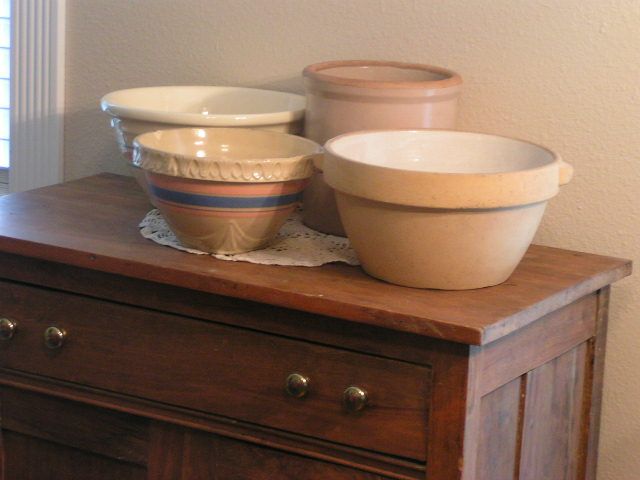 Martha Stewart has a really neat site for women in business where they can share their accomplishments, new products, business ideas, accounting help and countless other types of discussions. One of the women has started a forum about the vintage lifestyle and I decided to join these lovely ladies. Jolene encouraged me to do a post about some of the things that I have from the vintage kitchen. I thought that would be fun and so I grabbed the camera and just started taking pictures. Of course, that led to the vintage lighting and furniture and everything else, so I got a boatload of photos. These are things that have been in my family for generations or that we have picked up along the way. I have used many of the items in my kitchen just for the fun of it and it makes me feel a bond with grandmothers and great-grandmothers as I imagine them standing in their kitchens, hands grasping the very same utensils. Hope you have fun scrolling through yesteryear! 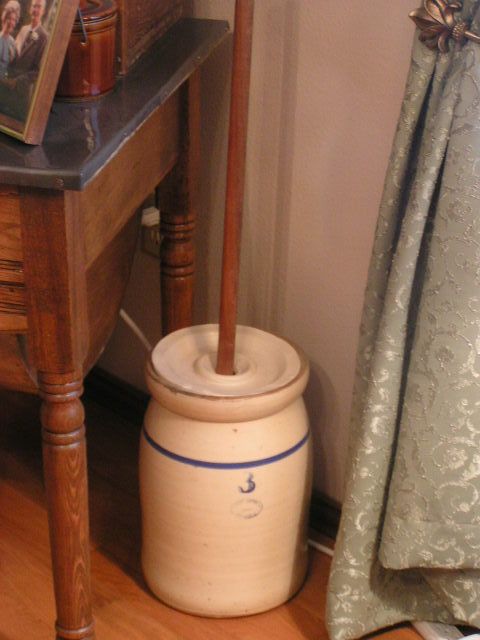 The country kitchen had a butter churn for all that sweet cream carried in from an early morning milking 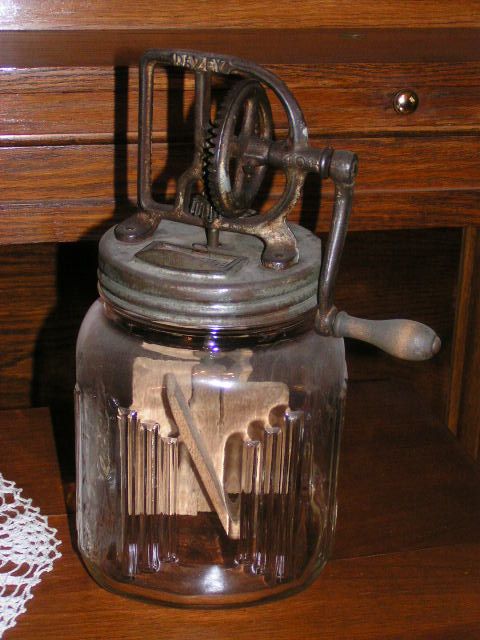 And if they were lucky, they could afford a Daisy Churn with paddles and a handle that turned for faster butter. 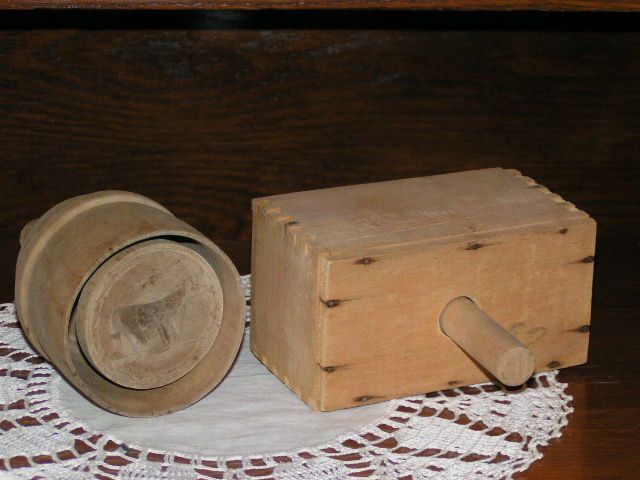 And of course, that butter was put into butter molds to shape into blocks for the table 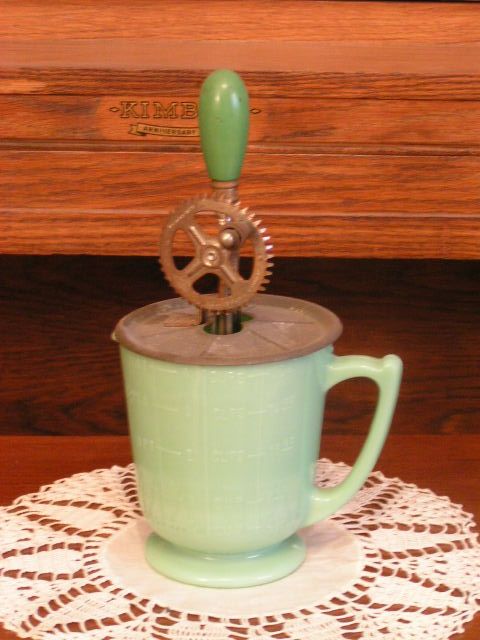 Sometimes the cream was whipped with sugar to top some dessert and a jadite beater bowl with accompanying hand mixer was just the thing for the job.  Juicers were a necessity for juicing oranges, lemons and limes. These glass juicers are made of jadite, Vaseline Depression glass, and clear, pressed glass. 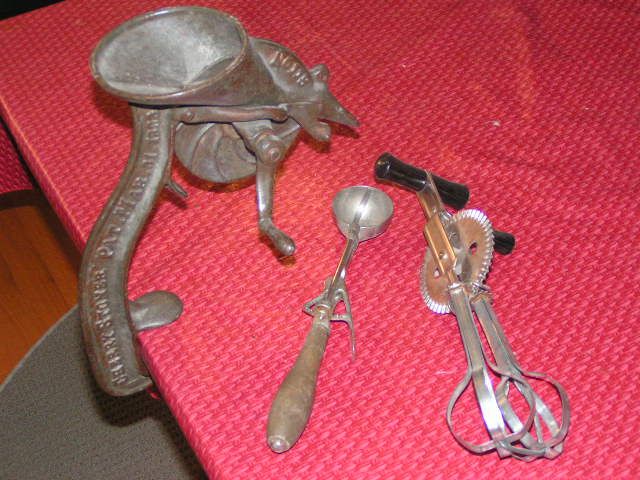 When turned, a cherry pitter clamped to the table, pressed the stones out of fresh cherries that were dropped into the hopper. Ice cream was served with this wooden handled dipper and this hand beater did a number on the eggs! 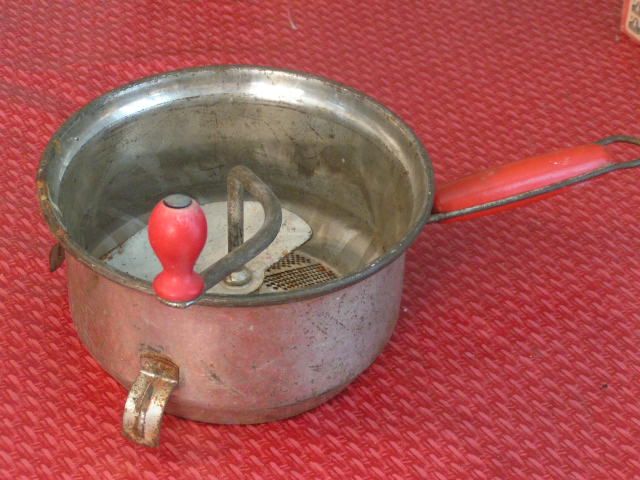 A Foley Food Mill pressed potatoes, peaches, cooked apples and anything else that required mashing. This particular mill was used for pressing ripe persimmons for persimmon pudding. 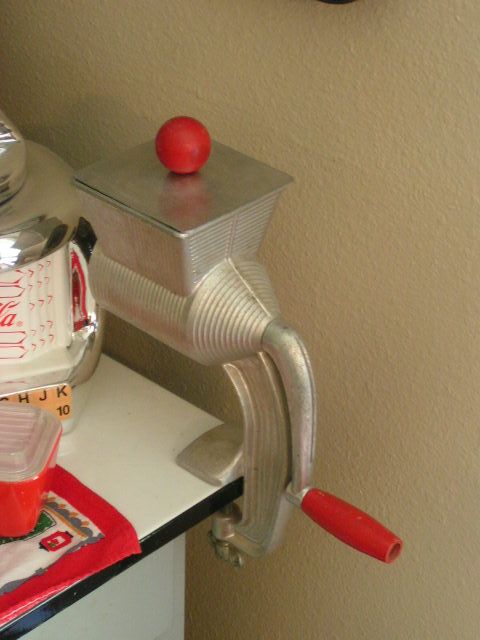 The modern food processor of the day was not electric! Different drums were placed inside the mouth of this utensil depending on whether the cook wanted grated, sliced or zested. The food was fed through the hopper with the turn of the handle. 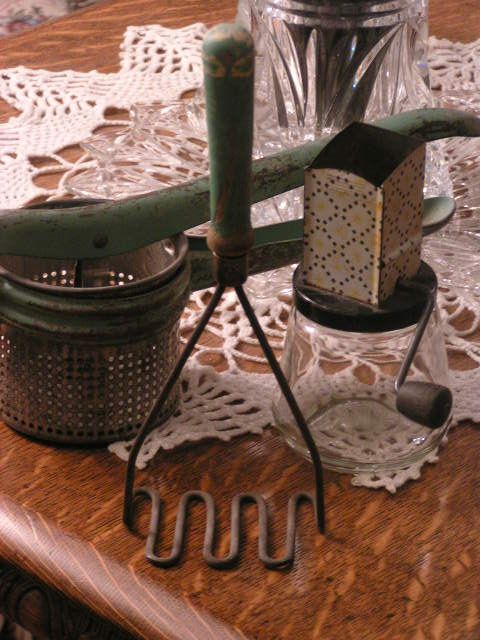 This nut chopper was my grandmother’s and I still use it. You turn the handle and the nuts are grabbed by sharp teeth that cut them and then push them through more blades. The potato ricer to the left is from my husband’s family as is the wooden handled potato masher in the foreground. 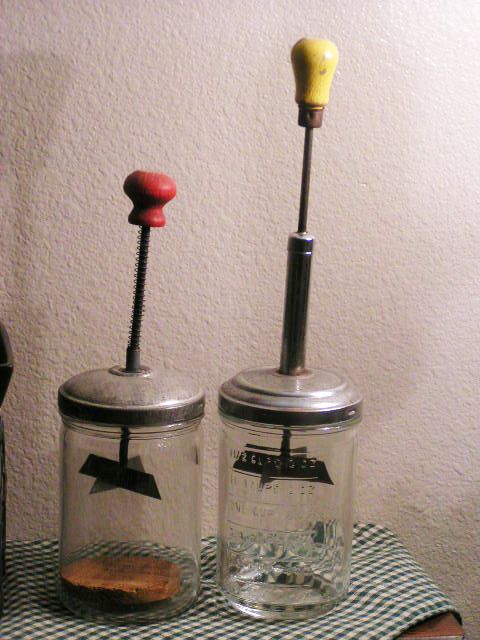 Other choppers were used to dice onions, garlic and other small veggies. 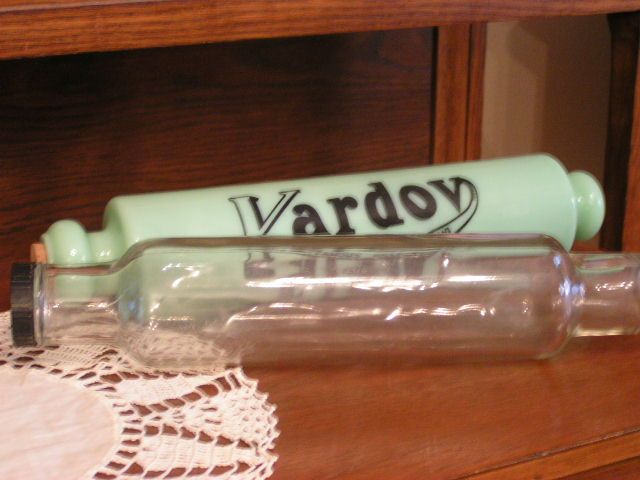 Wooden rolling pins, as today, were common and cherished. But glass rolling pins were not uncommon either. They were great for buttery pastry dough because they were filled with ice and water , capped and provided an icy cold surface to roll out the dough. The clear glass rolling pin was my grandmother’s. The jadite is not antique, but is a replica of an old rolling pin. 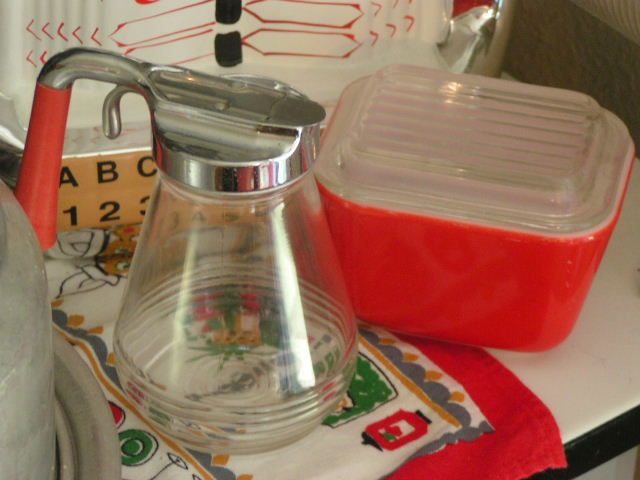 Syrup dispensers haven’t changed much over the years, except for the telltale wooden handle of the vintage ones. A red, glass refrigerator dish brightly colored the refrigerator. 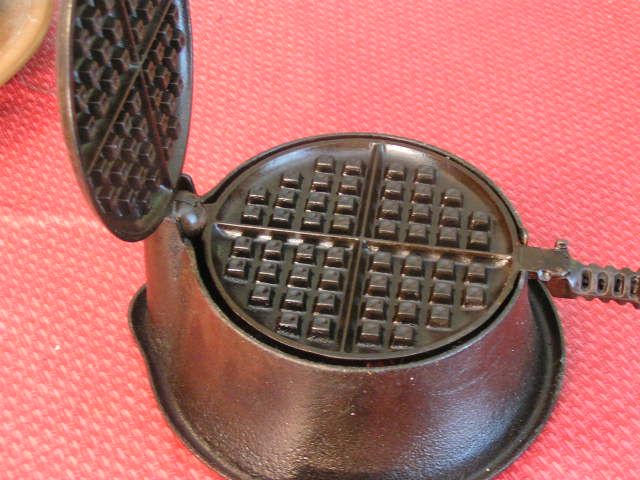 Of course, no household could do without a waffle iron and for the early 20th century, wood cookstove, a Griswold cast iron model was just the ticket with its tall base for perfect waffles. And perfectly seasoned, this was the first “nonstick” cookware! 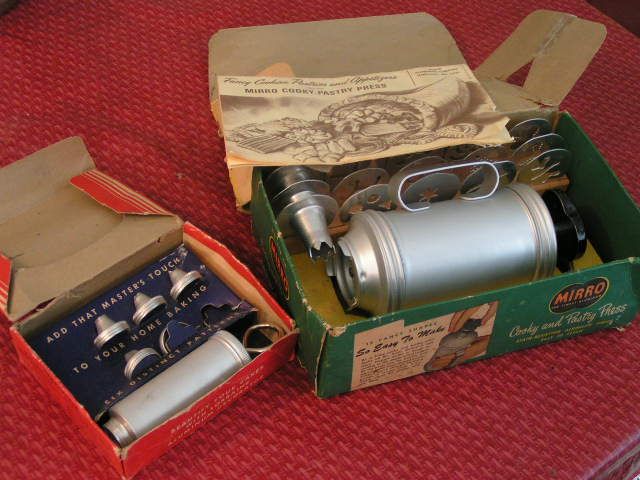 In the ‘50’s Mirro introduced a handy cookie press with all kinds of wonderful shapes to create beautiful cookies. I grew up turning out cookies at Christmas, sprinkling colored sugar balls and sugars on them to decorate. An aluminum cake decorator came in handy too.  Blue Atlas and Ball canning jars were sealed with zinc lids to hold meats and goodies from the garden.  There was no Tupperware or Rubbermaid back then and for the early “ice boxes” and newer electric Frigidaires, glass refrigerator dishes provided safe keeping for leftovers. These are made of Agite Jadite. And for those with special kitchen cabinets first created in Nappanee, Indiana, called Hoosier, tea, coffee and sugar were kept in special glass canisters.  This original Hoosier style cabinet called a Boone Cabinet – circa early 1920’s – was kitchen central for the lucky cook. The large sifter holds an enormous amount of flour and actually pulls out on jointed arms over the floor to make it easier to load the flour. The white jars with red caps are vintage spice jars. The doors are decorated with the original cuts of agite glass and the open cupboard below can be hidden with the tambour door that smoothly rolls down. 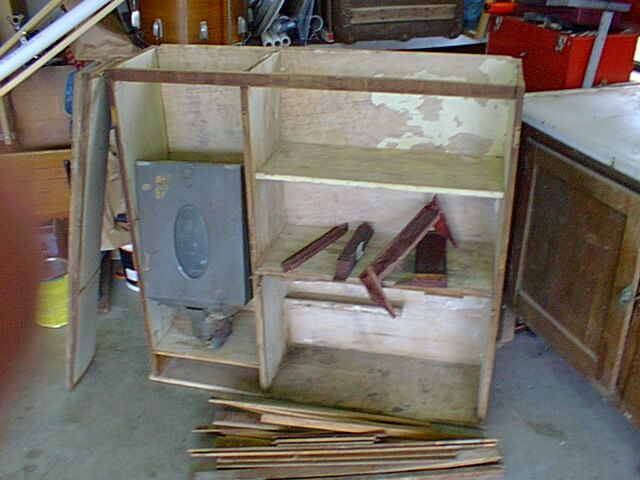 This is what the cabinet looked like before I refinished it and put it back together!! The pile of sticks is the tambour door in pieces. I am rather proud of that project. Mr. Fix-It wasn’t convinced that I could fix it. 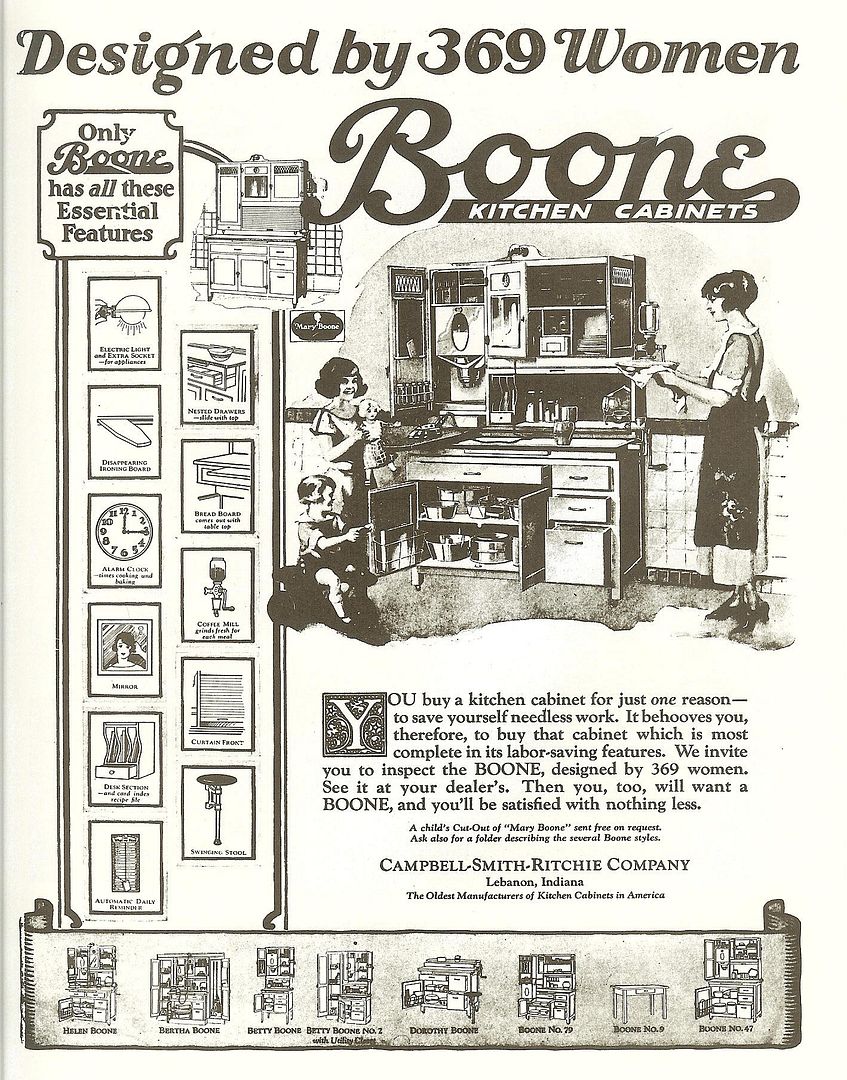 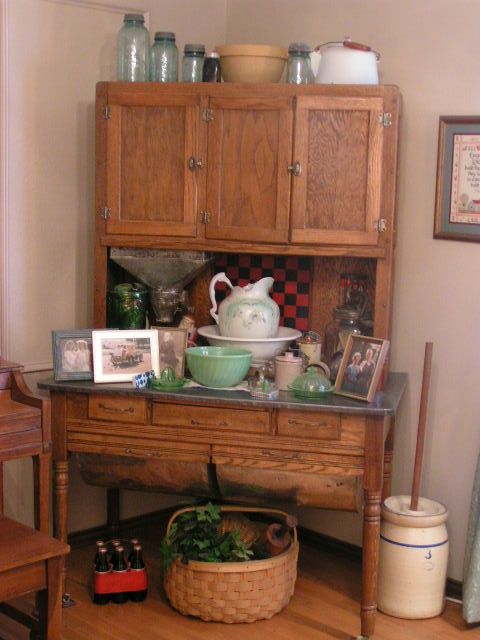  This cabinet was a real pill to refinish too. Somebody had spray-painted it yellow and covered the zinc top with 60’s era psychedelic mushroom contact paper . The turned legs were fun too. A wire brush was all that got the paint out of the cracks. I love to refinish furniture because I love working with wood, but I also enjoy watching the process of going from ugly to beautiful. 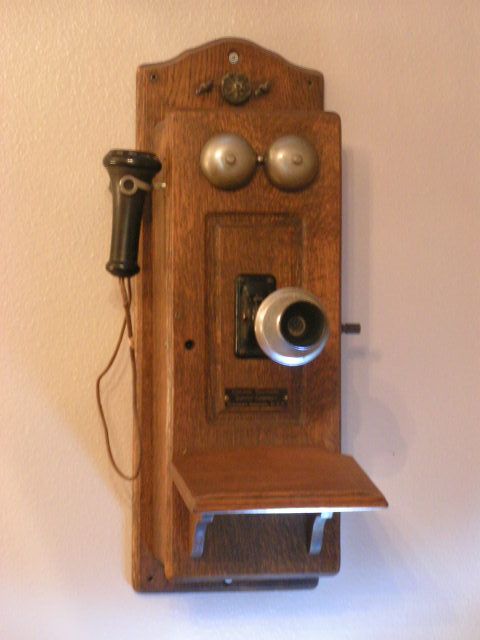 Life changed drastically when people were able to call each other on the new telephones. This one has been in my family since it was my great aunt’s.  The Victrola entertained the family with music and talking records. This was my great-grandmother’s and is one of my next refinishing projects. 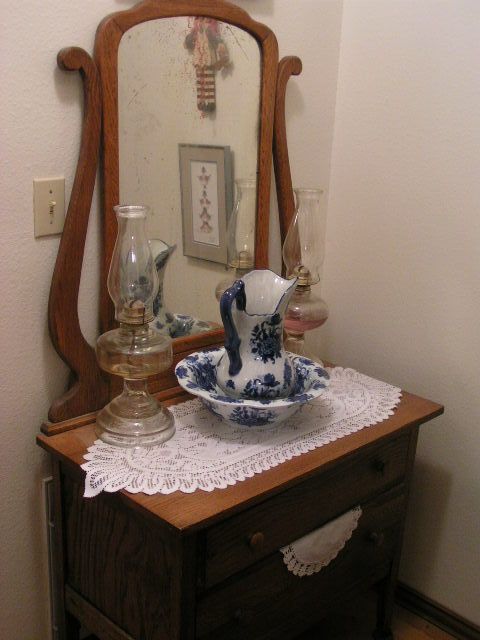 The bowl and pitcher was a must for daily cleansing and kerosene lamps gave light in the evenings. An oak washstand was the precursor to our bathroom vanities. Just a little bit of info: the lamp on the left is from the early 20th century as the wick section is threaded to screw into the bottom half. The one on the right is a newer lamp since the wick section has a threaded ring that screws over the bottom half. 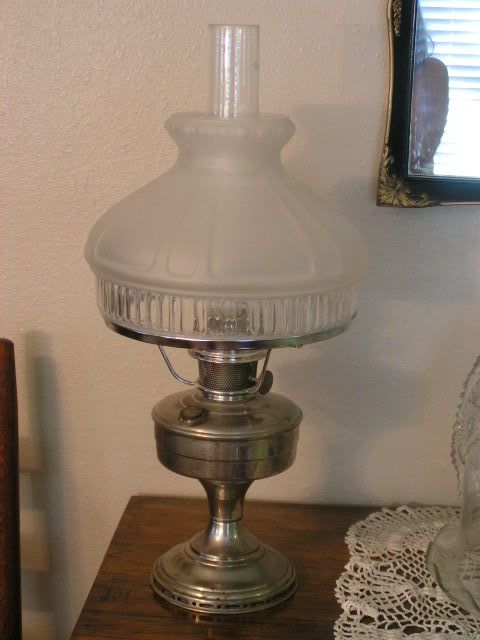 More elegant lamps graced stately homes. This pewter lamp with frosted glass globe is very pretty. 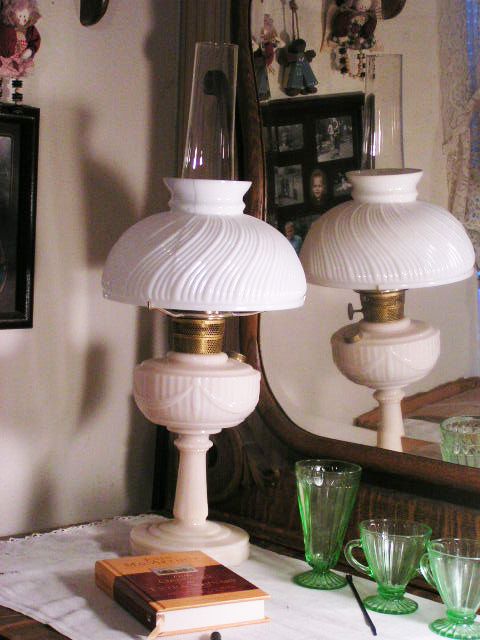 But nothing compared to the towering Lincoln Drape lamp. It was elegance deluxe and is made of agite glass all the way to the base. This was Mr. Fix-It’s mother’s. And so there you have a little bit of history in pictures. I hope you enjoyed the tour.  |
|
Oklahoma Pastry Cloth™ Company on Facebook
|
 |

 Homestead Revival
Homestead Revival Paratus Familia
Paratus Familia Rural Revolution
Rural Revolution